Putting the Awful Eastern U.S. Wildfire Smoke in Perspective
The media capital of the world is freaking out over air pollution levels that are low compared to those in millions of developing-country homes
Small-particle pollution readings in the New York metropolitan region as of 5 p.m. U.S. Eastern time, June 7:
VARIOUS UPDATES 5:15 p.m. EST - Thanks to weather conditions and explosive early-season wildfires across vast stretches of Canada’s forestlands, the most populous portion of the U.S. East Coast has been getting a dose of dangerous sooty air pollution so bad that New York City has sporadically topped Delhi and other famously unbreathable megacities on maps of toxic PM 2.5 pollution. (P.M. 2.5 is particulate matter 2.5 microns across or smaller, which poses a big risk because it penetrates deep into lungs.) More on that in a moment.
Here are some quick takeaways and tools. And please share this post now with folks in affected areas.
The fires, and the climate
The fires are insane, as you can see yourself on the incredible Zoom.Earth website. Here’s a snippet I recorded over the weekend.
Long-term human-driven climate change is almost assuredly in the mix of factors driving this level of combustion, through intensifying heat and drying. Back in March, reflecting on results of a paper he co-authored on the vast boreal forest fires of 2021, Steven Davis, a University of California Irvine climate researcher, said, “These fires are two decades of rapid warming and extreme drought in Northern Canada and Siberia coming to roost, and unfortunately even this new record may not stand for long.”
Stay tuned to see if 2023 beats 2021.
The health threat
The conditions being experienced from the upper Midwest across the Eastern seaboard are bad, and undoubtedly will contribute to respiratory and circulatory illness and early mortality for thousands of people who are unprotected (meaning families without filtered air or workers who can’t avoid being outdoors). [INSERT 12:15 pm: If you’re in harm’s way, now’s a good time to get out those n95 masks.]
You can track conditions here at Airnow.
Keep a wide view
If you really care about stemming human harms from such pollution, take a breath first before simply ingesting and sharing the flood of #codered headline alerts coming through your feed.
The news coverage of the smoke palls swirling out of Canada across the populous East Coast has appropriately centered on the substantial threat to people sufferinig from asthma, heart disease and other ailments exacerbated by smoke inhalation.
There’s been a missed opportunity, to my eye. This would be a great moment to remind North American audiences that much of the developing world lives, indoors and outside, with vastly worse smoke exposure.
What's particularly haunting about this smoky moment in the media capital of the world is how many tens of millions of households worldwide have chronic indoor P.M. 2.5 levels vastly worse than those in Manhattan right now.
Here’s a quick tour via the World Air Quality Index map.
When wood burns indoors
Keep in mind this map is only of cities with online air quality data. When I was working for ProPublica in 2017, I reported from rural communities in India where cooking fires daily are ravaging the health of women and children (those spending the most time at home). Globally, there is a vast toll of premature deaths and debilitating illness from chronic exposure to smoke from cooking on wood or charcoal. And a decade of “Sustainable Energy for All” work has not kept up with the impacts.
I was in homes in rural India (just a few hours’ drive east of Mumbai) with famed air pollution researcher Kirk Smith with smoke levels that so routinely pegged his P.M 2.5 meter at 999 parts per million that he usually didn’t bother bringing it along. (For those of you who click to sources, here’s one of the resulting papers from his research there.)
At the moment, New York City’s P.M. 2.5 level is in the 160s.
A P.M. 2.5 pollution tour by a public health hero
No scientist contributed more to understanding the array of physiological impacts from these tiny smoke particles than Smith, who devastatingly died in 2020 of a stroke at age 73. As with climate change, there’s no simple straight line from cause to effect but I’d be amazed if his decades in the field in dangerously polluted homes and cities didn’t contribute to his early demise.
Smith forged an astonishing career in public health research through many decades at Berkeley, melding sophisticated statistical analysis and grueling field studies to reveal an array of harms from household sources of such pollution, particulary from cooking fires.
Smith always took a pocket P.M. 2.5 meter on his journeys.
Below, you can marvel (in horror) at what amounts to a P.M. 2.5 journal compiled by Smith on two trips - one to India and the other within that smoky nation. Track these numbers in the context of what’s been in the smoky Northeastern U.S. news cycle over the last few days.
Two trips, within and going out of India. Note nearly 3 orders magnitude difference in exposure rates at different points. I suppose the very clean aircraft air is partly due to good filtering, but also because of clean outside air at 36,000 ft/k
[Using what is turning out to be a nicely functioning portable monitor reading in ug/m3 of PM2.5 (The Oceans, made in Hong Kong and retailing for $120 in Delhi). Sorry to those who do not usually frame PM2.5 numbers in your head—remember the WHO level is 10 in these units, US standard is 12, and India’s is 40. These are annual levels to stay healthy based on somewhat different criteria in each case.}
Domestic trip in India: Chennai to Delhi
Hotel room in Chennai on awakening: 36
At breakfast meeting in hotel: 56
Outdoors waiting for car: 85
In cab on the way to airport (no AC): 70
At entrance to terminal: 80
In terminal: 55
In plane before take off: 50
At take-off, it slowly declined and by the time the seatbelt light went off it was 1 (yes 1 and probably actually near zero since the device has no zero reading)
1 for entire flight and only drifted up to 5 when taxing to terminal in Delhi
When plugged into ground power and full AC on the plane started up again – 1
When door opened, it started to move up and in the jetway 210
Baggage area: 180
Outdoors 250
Taxi (no AC) 210
Outside our flat: 280
Inside flat with two air cleaners going: 120
Delhi to Toronto to SFO
Wake up in morning: 420 in living room, moved air cleaners from bedroom
Web indicated nearby ambient monitor had reached over 600 during night
After two hours, it came down outside to about 260 outside and about 65 in the flat
Gave away our air cleaners to friends in early eve and the level inside rose to about 200
Get into taxi at 9:30 when it was 290 outsides
Inside airport it was about 90
Went to 1 during the rise to flight altitude after takeoff and stayed there for 14 hours
6 in the jetway in Toronto
1-3 in various parts of the Toronto terminal.
Note, the web showed the nearest government ambient monitor to read 21
Jetway 6
Flight to SFO: 1
SFO terminal: 3
Outdoors at terminal 10
Home in Berkeley 5
I miss Kirk Smith and hope his wisdom can carry forward with your help. Here’s an interview I did with him in the field in India in 2017, taped by the photographer Ashima Narain.
Relevant writing [update]
John Vaillant, the prize-winning Canadian author of several acclaimed books, has the kind of timing that’s fortuitous but also depressing with his new book, Fire Weather - a True Story from a Hotter World. His new Time essay is great, particularly this line:
There is a theme running through the weather-related disasters now traumatizing communities around the globe in all seasons, and it is the theme of dissonance. It’s not just our infrastructure that’s built for a different time, it’s our mindset. Whether it’s the depth of the snow, the volume of the rainfall, or the speed of the flames, when it comes to extreme weather, our heads are still in the 20th century.
Relevant research
Estimated Mortality and Morbidity Attributable to Smoke Plumes in the United States: Not Just a Western US Problem
https://www.ncbi.nlm.nih.gov/pmc/articles/PMC8420710/
Estimated Global Mortality Attributable to Smoke from Landscape Fires https://ehp.niehs.nih.gov/doi/full/10.1289/ehp.1104422
Parting shot
Two hundred firefighters from South Africa are among legions of crews heading to Alberta and Quebec to stem the Canadian combustion. The esprit de corps in wildland firefighters can be felt in this video from a tweet by Canada’s Working on Fire agency showing the South African team. Here’s hoping for safety for them and the thousands of wildland fire-management professionals waiting to be deployed around the U.S.’s wildlire danger zones.


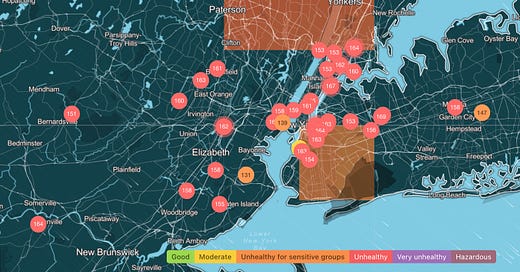


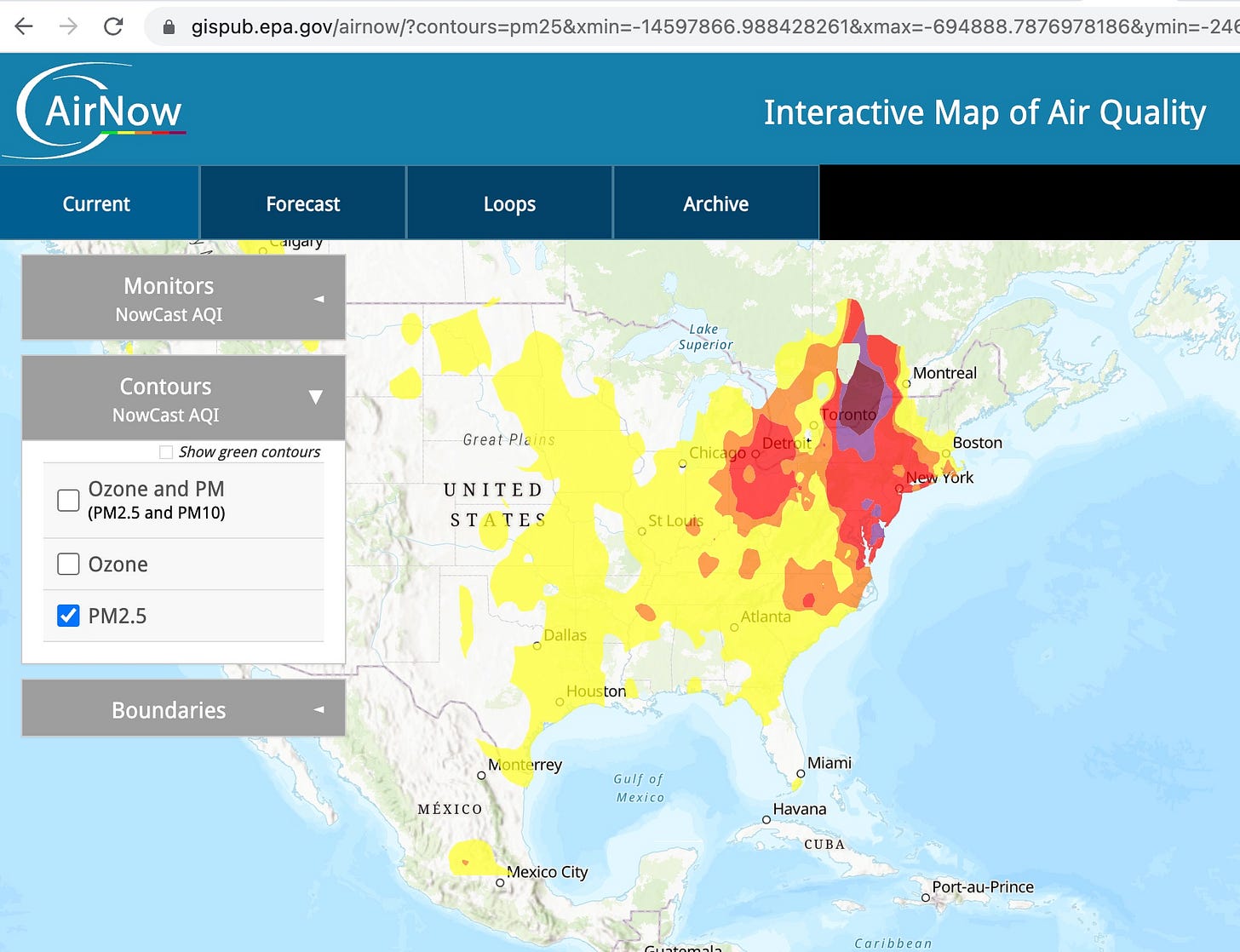
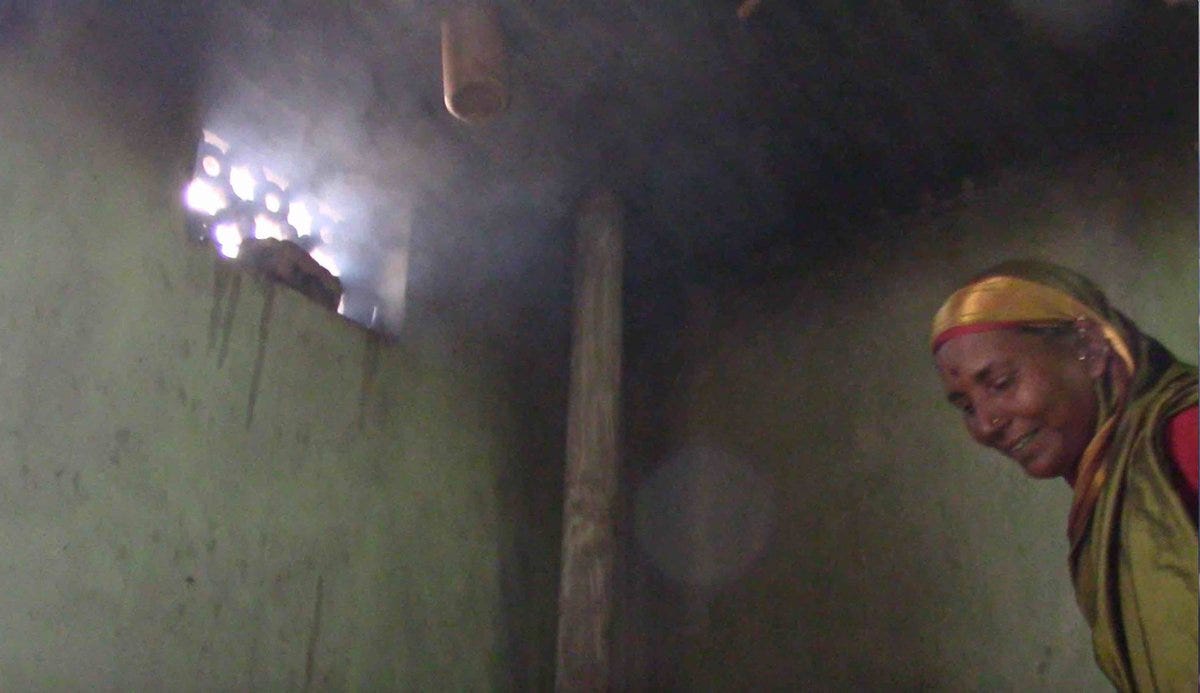
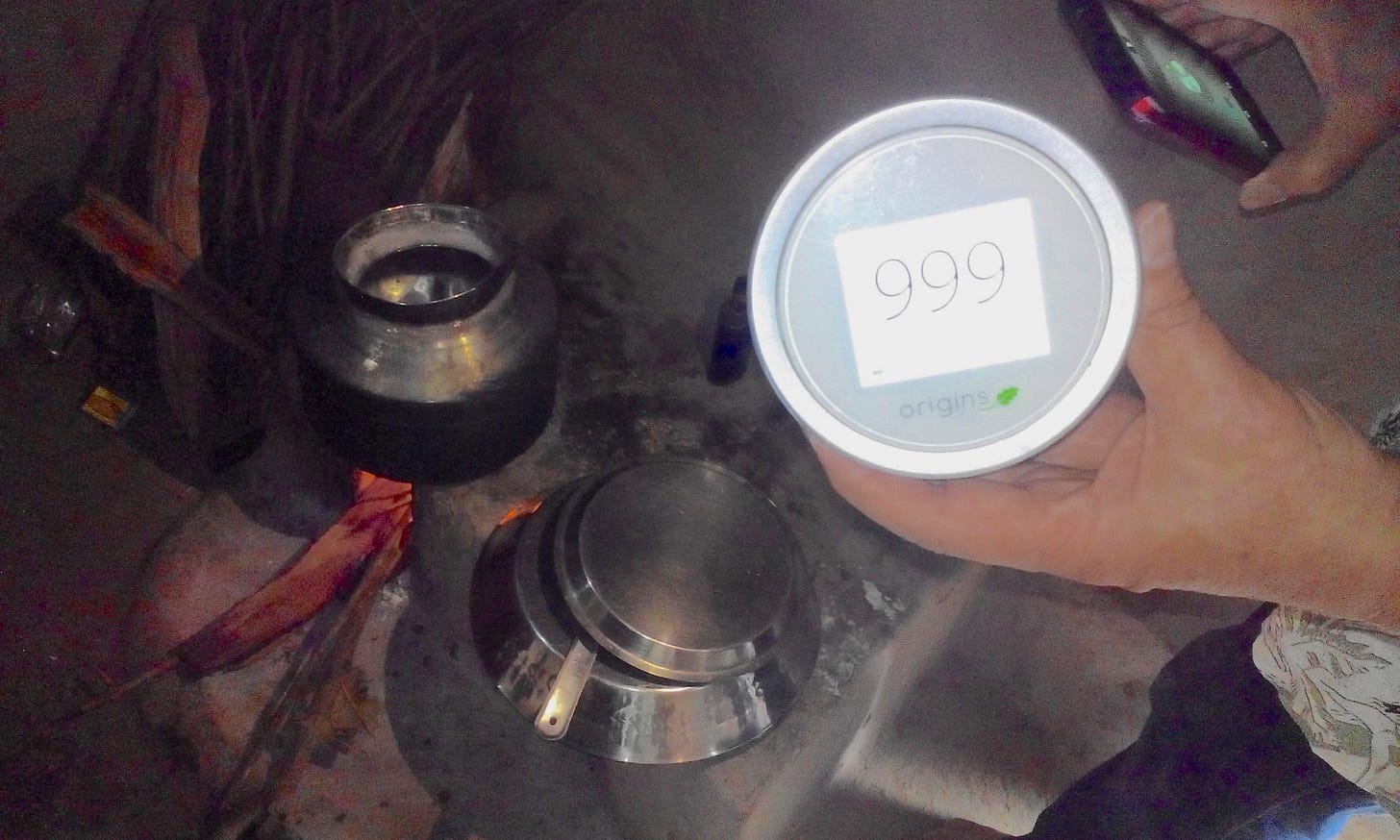

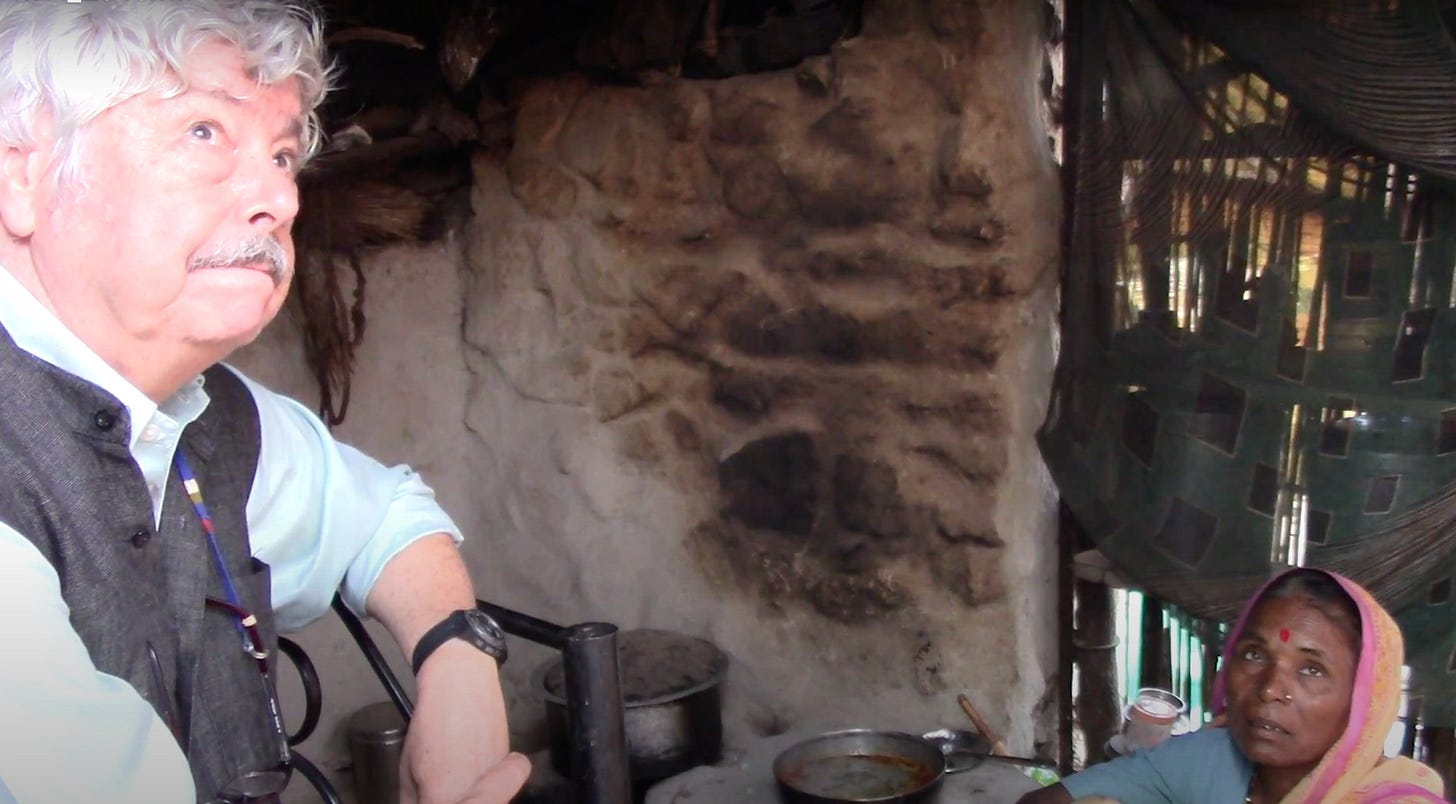
Great article here by Andy Revkin, giving us in depth analysis of the smoke alert in New York City and the east, and comparing it to everyday smoke in less developed countries. For us in California it's even a bit of a surprise that eastern Canada has forest fires on the level of California and British Columbia, but simple cooking fires, which Andy then gets into, unfortunately drive much of the small particle asthma in places like India and Pakistan. This piece ably connects the dots!
Open in app or online
Putting the Awful Eastern U.S. Wildifre Smoke in Perspective
The media capital of the world is freaking out over air pollution levels that are low compared to those in millions of developing-country homes
Appears that East Coast residents don’t get how bad wildfire smoke is until it happens to them. Out West this is how our summers have been for that last few years. Of course, the wind direction can change any minute. Wear masks. We know what we need to do. We need to get off fossil fuels and boost renewables.
The bottomline-- what do we do about fossil fuel capture of state and federal government?